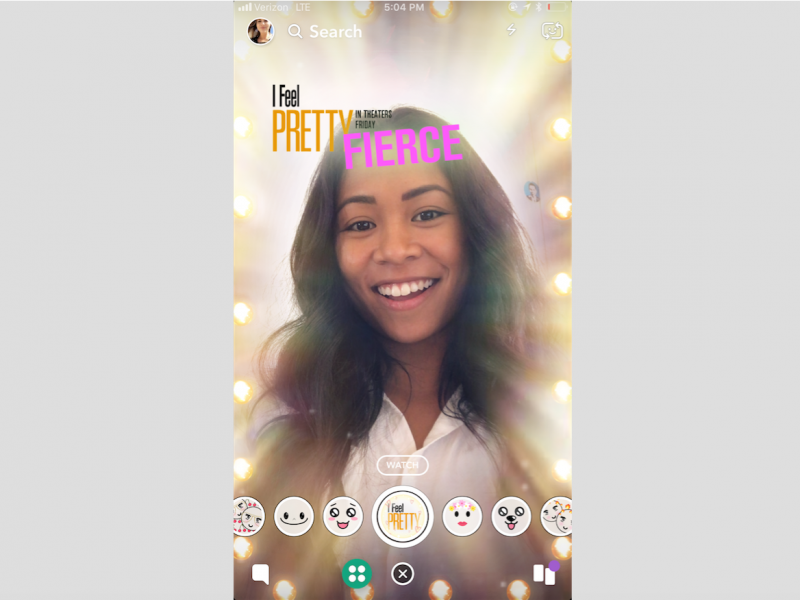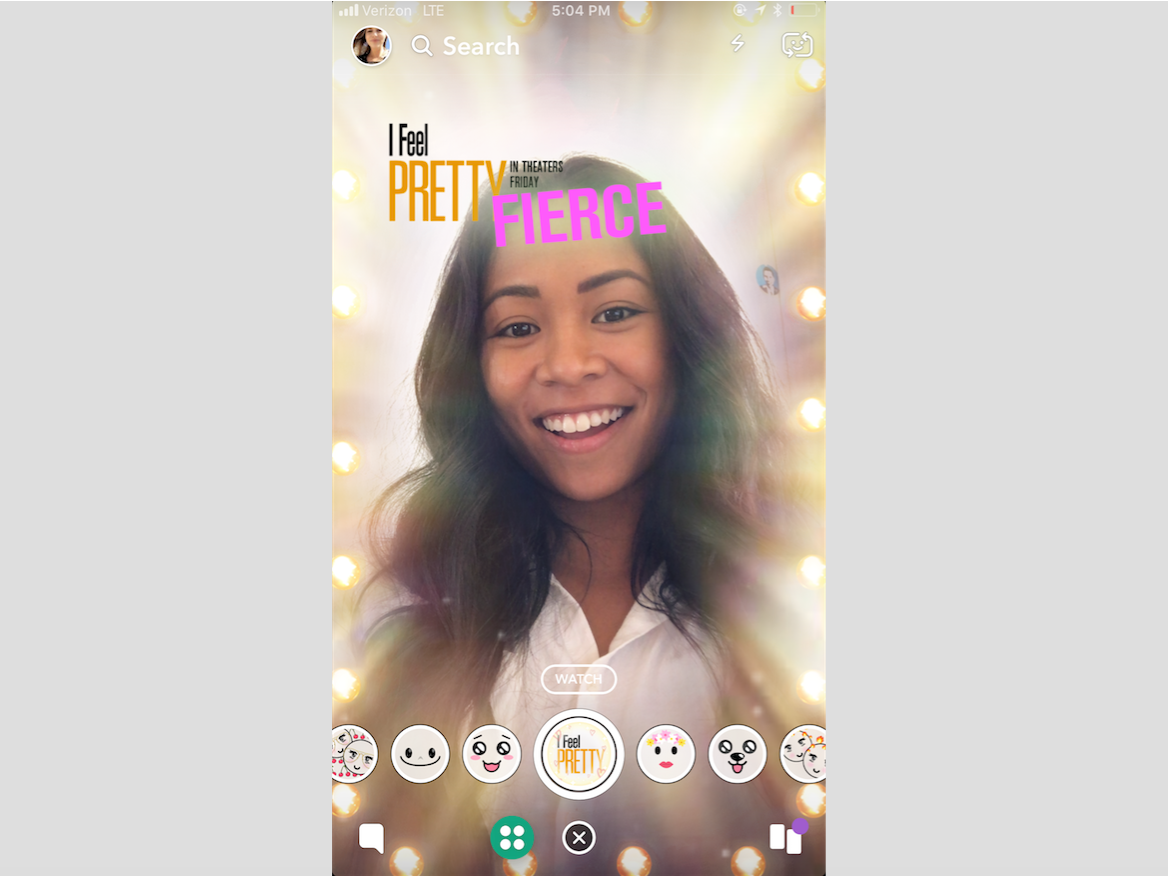- Snapchat has made a massive push into AR, and has consistently iterated on its offerings to get as many marketers on board as quickly as possible.
- Take a look at the various types of AR ads that can be created on the platform.
You’ve probably seen the giant face taco shell, the barfing rainbow and the dancing hot dog, perhaps the three most popular examples of augmented reality on Snapchat. But that’s not it.
The self-proclaimed camera company has made a massive push into AR, and has consistently iterated on its offerings to get as many marketers on board as quickly as possible.
Marketers consider Snapchat the market leader in this field, with Tom Buontempo, the president of the ad agency Attention, telling Business Insider recently that “they seem to be headed in the right direction by doubling down on something they can own.”
Since it first introduced sponsored augmented reality lenses in 2016, Snapchat has added new creative and technical enhancements, as well as a suite of targeting capabilities and measurement tools to its AR-powered lenses.
It has also attempted to "democratize" AR for everyone, according to Carolina Arguelles, the AR product strategy lead at Snapchat, by making AR accessible at various price points.
Here are the various ways you can use AR on Snapchat, depending on your objective:
If you're a movie studio looking to drive views to your trailers

Millennials and Gen-Xers are a coveted segment for movie studios, making Snapchat an important way for studios from Warner Bros. and Universal to STX Entertainment to try to tap into them.
Movie studios can invest in AR lenses and use them to drive Snapchat's young audience to their trailers with a prominent "Watch" button like the one above, as STX recently did with the upcoming Amy Schumer film "I feel Pretty."
If you're a brand that wants to extend your TV campaign, or bring a beloved mascot to life

Marketers can use Snapchat AR lenses to extend or complement a major television buy. One popular tactic is to use a brand mascot or create a new 3D one - just like Snapchat's dancing hot dog.
Budweiser did this when Snapchat rolled out the ability for brands to create their own 3D objects in September 2017, and then once again during the Super Bowl, where it had a 3D horse modeled after its famous Clydesdale horse kick a field goal.
If you're a brand looking for as many people to share your content as possible
*FREEZE ALL MOTOR FUNCTIONS*
Question the nature of your reality with the official #Westworld @Snapchat Lens. @evanrachelwood pic.twitter.com/iezUxJSUt4— Westworld (@WestworldHBO) April 22, 2018
The majority of Snapchatters use the app for communicating and exchanging content with their closest friends, not a wide audience. And 87% of users rank close friends as the most influential factor in purchasing decisions, according to research commissioned by Snap.
So brands can theoretically tap into the app's millions of daily users, and convert them into brand advocates at scale. HBO recently did this when it created a shareable lens for the season two premiere of its hit show "Westworld," by putting an unforgettable moment from the show on the user's face.
If you're a small or mid-sized brand whose goal is to drive app installs

Snapchat has been aggressively courting small and medium-sized businesses and going after the app install market. In fact, it doubled the total revenue coming in from app install campaigns in the fourth quarter of 2017, according to chief strategy officer Imran Khan.
The only way to do that until recently was through video Snap ads. But with the "Install Now" button rolled out last week along with "Watch Now," small marketers can drive direct downloads of their apps.
King, the maker of Candy Crush, for example, ran a targeted campaign with an "Install Now" button, urging audiences to download the app.
If you're an auto brand looking to give consumers a 3D demo of a product
Marketers that want users to demo a product can use video ads to get them to "swipe to try" an AR lens with their products in them. Granted, not everyone will actually swipe up, but those who do probably have a higher intent for purchase, and can be funneled for future ad targeting.
This is also Snap's least expensive AR ad offering, as auction bidding for Snap Ads starts at $100. BMW was the first brand to opt for this approach with a campaign for its X2 car.
If you're looking to boost engagement by gamifying the AR experience

Marketers tracking engagement metrics such as time spent and looking to achieve more long-term objectives can also gamify the Snapchat experience for users.
Such an experience or lens uses AR in the real world, like Nike's ad, which was the first to use the phone's gyroscope.
If you want to create an immersive storytelling experience through AR
"Portal lenses," or AR lenses that transport the viewer into a whole new AR world from within the camera, take gamified lenses a step further.
Portal lenses, such as the one that Netflix ran to promote Stranger Things last fall, are among the most engaging AR ads on the platform - and can regularly drive over a minute of play time, according to Snap.
If you want to drive a consumer to purchase

Last week, Snapchat added a feature that can drive users to shop for products just with the tap of a "Shop Now" button. It lets brands extend an AR interaction beyond the camera, driving traffic to a product page, with no additional charge.
Coty's Clairol brand, for example, is currently running a targeted AR beauty product trial with a prominent "Shop Now" button on top of its AR lens.
If you want to create a whole branded game

If you still want to push the envelope, you may be able to create your very own branded AR game that uses touch, motion as well as facial expressions to win points in multiplayer games.
Snapchat just rolled out "Snappables" this week, and while these are not branded opportunities as yet, the company's track record suggests that they very well could be down the line.


